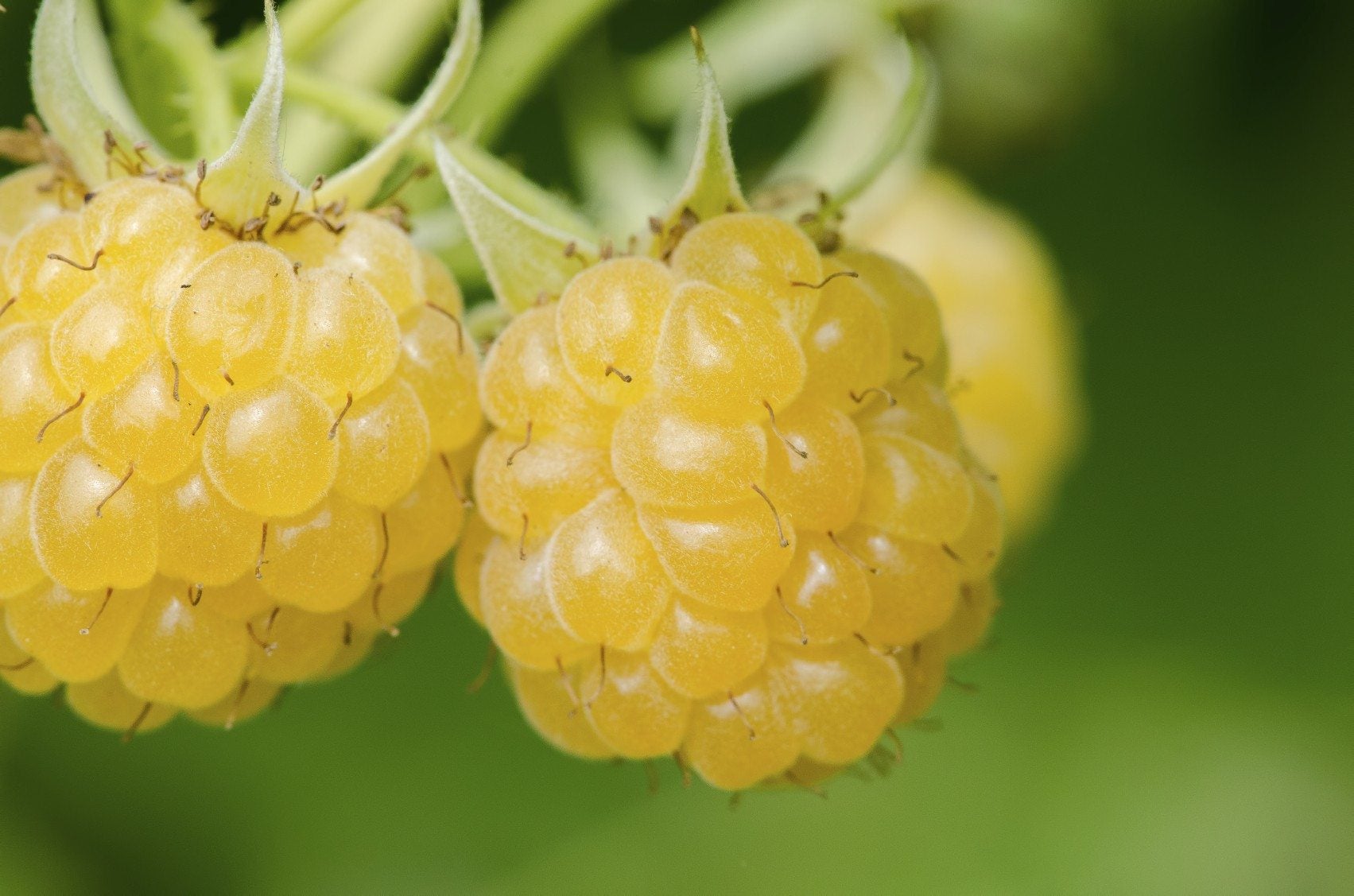Golden Raspberry Plants: Tips On Growing Yellow Raspberries

Raspberries are succulent, delicate berries that grow along canes. In the supermarket, generally only red raspberries are available for purchase but there are also yellow (golden) raspberry varieties. What are golden raspberries? Is there a difference in the care of yellow raspberry plants vs. red raspberry plants? Let’s find out.
What are Golden Raspberries?
Golden raspberry plants bear a mutated version of the common red cultivar, but they have all the same planting, growing, soil, and sun requirements. Golden raspberry plants are primocane bearing, meaning they bear fruit off the first year canes in the late summer. They tend to have a sweeter, milder flavor than their red counterparts and are pale yellow to orange-gold in color. Since they are less common than the red raspberry, they are usually sold as a specialty berry at farmers markets and the like, and command a higher price – a great reason for you to grow your own. So how do you go about growing yellow raspberries?
Growing Yellow Raspberries
There are several yellow raspberry varieties and most are hardy to USDA zones 2-10.
- One of the more common types, Fall Gold, is an extremely hardy variety. The fruit color may vary from very light yellow to a dark orange at maturity. This varietal is an ever-bearing cane, meaning it will produce two crops per year.
- Anne, a late season bearer, should be spaced close together (16-18 inches (40.5-45.5 cm.)), as the cane density is meager.
- Goldie runs in color from gold to apricot and is more susceptible to sunscald than other varieties.
- Kiwigold, Golden Harvest, and Honey Queen are additional yellow raspberry varieties.
Plant golden raspberries in either the late fall or early spring. To grow yellow raspberries, select a sunny site with afternoon shade. Plant the raspberries in soil that is rich, well draining and amended with compost. Space plants 2-3 feet (0.5-1 m.) and 8-10 feet (2.5-3 m.) between rows, depending on the type planted. Dig a shallow hole for the plant. Gently spread the roots out, place them in the hole and then fill in. Tamp the soil in around the base of the bush. Water the raspberry well. Prune the canes to no more than 6 inches (15 cm.) in length.
Care of Yellow Raspberry Plants
Care of yellow raspberry plants is not difficult as long as you keep them watered and fed. Water the plants twice a week during the hot summer months. Always water from the base of the plant to lessen the chance that fruit will stay damp and rot. Decrease the amount of water to one time during the week in the fall. Fertilize the raspberry bushes in early spring using an inorganic fertilizer like 20-20-20. Use 4-6 pounds (2-3 kg.) of fertilizer per 100 feet (30.5 m.) of row. When canes begin to flower, spread fertilizer such as bone meal, feather meal, or fish emulsion at a rate of 3-6 pounds (1-3 kg.) per 100 feet (30.5 m.).
Gardening tips, videos, info and more delivered right to your inbox!
Sign up for the Gardening Know How newsletter today and receive a free copy of our e-book "How to Grow Delicious Tomatoes".

Amy Grant has been gardening for 30 years and writing for 15. A professional chef and caterer, Amy's area of expertise is culinary gardening.
-
 Looking For Plants To Give You The Soft And Fuzzies? Try These 5 Fuzzy Leaf Plant Options
Looking For Plants To Give You The Soft And Fuzzies? Try These 5 Fuzzy Leaf Plant OptionsLovers of texture, drama, silver foliage and tactile plants will adore these special sensory garden additions. These fuzzy leaf plant options will leave you all aglow
By Susan Albert
-
 Get Ready For A Summer Of Hummers! Grow These Full Sun Hummingbird Plants and Flowers
Get Ready For A Summer Of Hummers! Grow These Full Sun Hummingbird Plants and FlowersIf you’re lucky enough to enjoy a sunny backyard, make sure you are maxing out on your pollinator opportunities and grow these full sun hummingbird plants and flowers
By Tonya Barnett